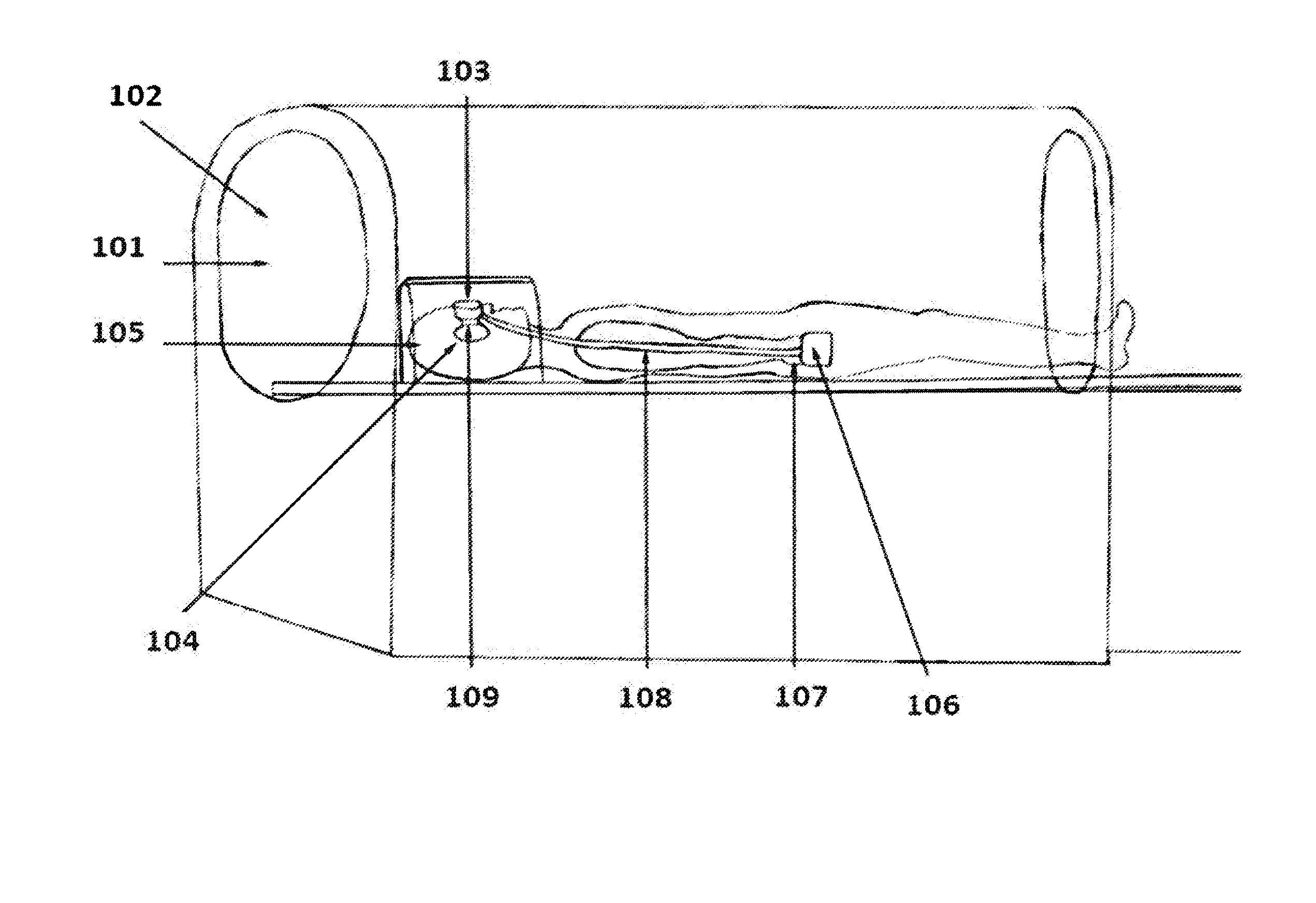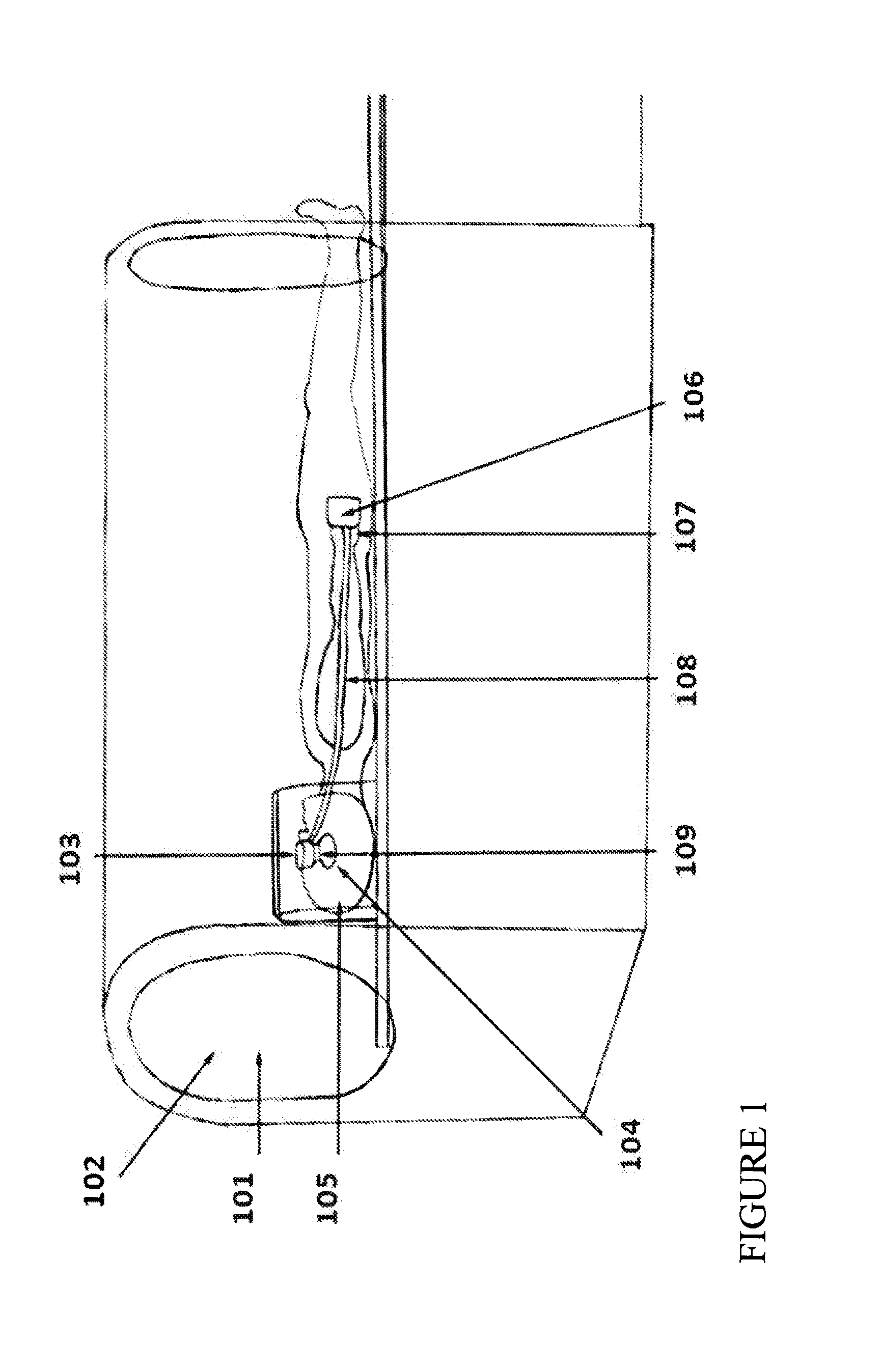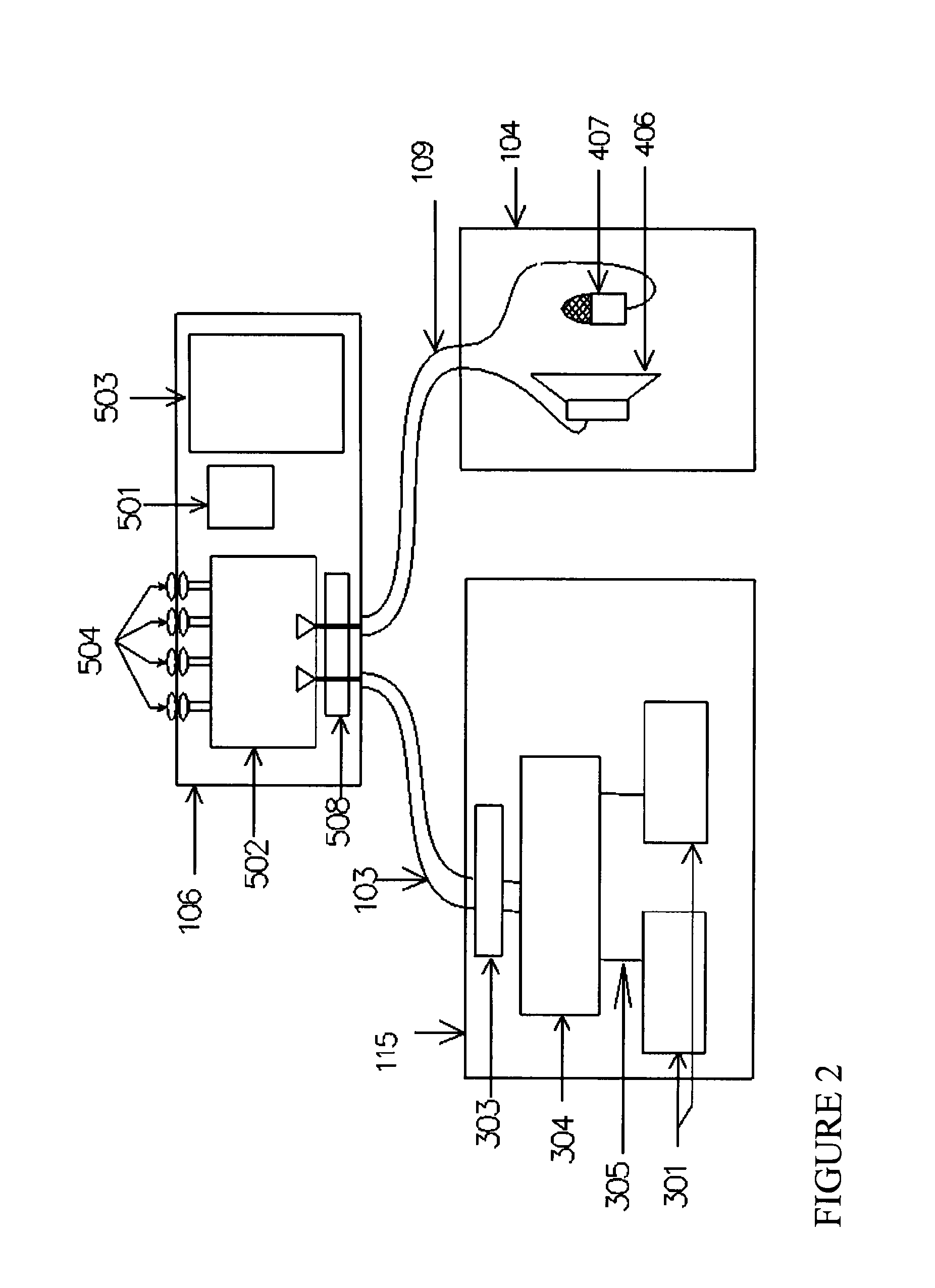Entertainment system for use during the operation of a magnetic resonance imaging device
a technology for entertainment systems and magnetic resonance imaging, which is applied in the field of entertainment systems for patients during the operation of magnetic resonance imaging devices, can solve the problems of increasing patient anxiety and discomfort, entertainment systems moving in the magnetic field and affecting the patient's comfort, so as to reduce patient anxiety, calm and entertain patients, and improve the efficiency of the mri system
- Summary
- Abstract
- Description
- Claims
- Application Information
AI Technical Summary
Benefits of technology
Problems solved by technology
Method used
Image
Examples
Embodiment Construction
[0031]The present invention is predicated upon methods and devices for entertaining a patient during the operation of a magnetic resonance imaging (MRI). Referring to the drawings, this is achieved through the use of a self-contained entertainment system 100. As shown in FIG. 1, a patient 101 is positioned within a magnet bore 102 of the MRI. The entertainment system includes a video component such as video glasses 103 and an audio component such as headphones 104 mounted to the patient's head 105. The entertainment system further includes a control unit 106 for controlling (e.g., driving) the video and / or audio components. It should be appreciated that because of the limited amount of space within the magnetic bore, the patient may have limited or no movement that would allow a hand of the patient to be easily moved to or near the head of the patient during MRI imaging. As such, in one embodiment, the control unit 106 may be positioned generally near the patient's hand 107 for inte...
PUM
 Login to View More
Login to View More Abstract
Description
Claims
Application Information
 Login to View More
Login to View More - R&D
- Intellectual Property
- Life Sciences
- Materials
- Tech Scout
- Unparalleled Data Quality
- Higher Quality Content
- 60% Fewer Hallucinations
Browse by: Latest US Patents, China's latest patents, Technical Efficacy Thesaurus, Application Domain, Technology Topic, Popular Technical Reports.
© 2025 PatSnap. All rights reserved.Legal|Privacy policy|Modern Slavery Act Transparency Statement|Sitemap|About US| Contact US: help@patsnap.com



